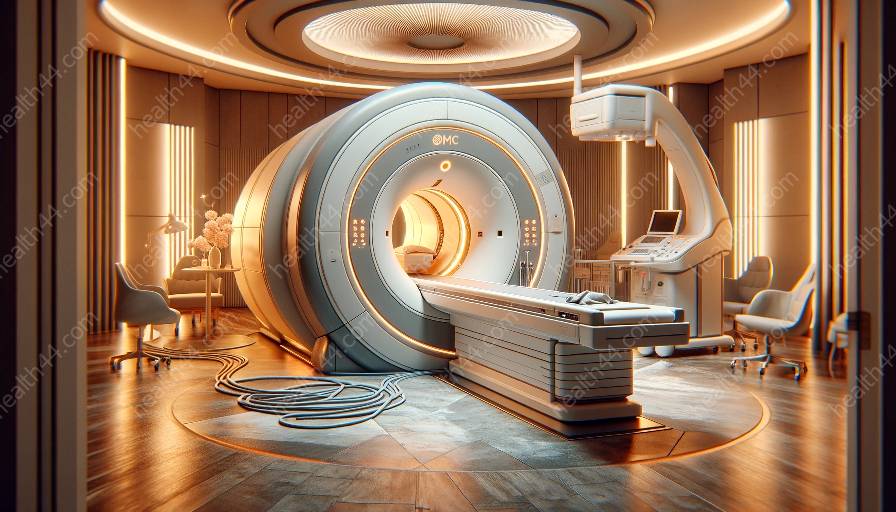The safety and regulatory standards for MRI machines play a crucial role in ensuring the safe and effective use of magnetic resonance imaging technology. As one of the most advanced imaging techniques, MRI technology has revolutionized the field of diagnostics, allowing for detailed and non-invasive visualization of internal structures, organs, and tissues. However, the powerful magnetic fields and radiofrequency energy used in MRI machines also present potential hazards, and it is essential to adhere to strict safety and regulatory standards to mitigate these risks and ensure patient and staff safety.
Importance of Safety and Regulatory Standards for MRI Machines
Adhering to safety and regulatory standards for MRI machines is essential for several reasons. First and foremost, these standards are designed to minimize the risk of accidents, injuries, and adverse events associated with the operation and use of MRI technology. MRI machines produce strong magnetic fields that can interact with ferromagnetic objects, leading to projectiles, collisions, and serious injuries if not properly controlled.
Additionally, regulatory standards for MRI machines help to ensure the quality and consistency of imaging results, contributing to accurate diagnoses and effective patient care. By following standardized protocols and guidelines, healthcare providers can optimize the performance of MRI machines and maintain high standards of imaging quality and safety.
Key Regulatory Standards for MRI Machines
The regulatory landscape for MRI machines is governed by a combination of international, national, and industry-specific standards. One of the most widely recognized standards for MRI safety is the ASTM International standard, ASTM F2503 - Standard Practice for Marking Medical Devices and Other Items for Safety in the Magnetic Resonance Environment. This standard provides guidelines for marking and labeling medical devices to indicate their compatibility and safety in the MRI environment. It also addresses the identification and management of potential hazards associated with the use of medical devices in MRI settings.
Furthermore, regulatory bodies such as the Food and Drug Administration (FDA) in the United States and the European Medicines Agency (EMA) in Europe play a key role in establishing and enforcing safety standards for medical devices, including MRI machines. These regulatory agencies require manufacturers to demonstrate the safety and efficacy of MRI machines through rigorous testing, documentation, and compliance with specified performance and safety criteria.
Benefits for Medical Devices and Equipment
Compliance with safety and regulatory standards for MRI machines not only benefits the operation of the imaging technology itself but also extends to the broader landscape of medical devices and equipment. By adhering to established safety standards, manufacturers and healthcare providers can ensure the compatibility and safe use of medical devices and equipment in the MRI environment.
For example, medical devices such as pacemakers, implantable cardioverter-defibrillators (ICDs), and infusion pumps must undergo thorough testing and evaluation to determine their safety and functionality in the presence of strong magnetic fields and radiofrequency energy. Adhering to regulatory standards ensures that these devices are designed, labeled, and used in a manner that minimizes the risk of adverse events and malfunctions during MRI procedures.
Guidelines for Ensuring Safe and Effective MRI Use
Healthcare providers and facility managers play a critical role in ensuring the safe and effective use of MRI machines by implementing comprehensive guidelines and best practices. These guidelines cover various aspects of MRI safety, including patient screening and preparation, staff training and education, equipment maintenance and monitoring, and emergency preparedness.
Patient screening and preparation protocols are essential for identifying contraindications and potential risks associated with MRI procedures. By conducting thorough assessments and obtaining relevant medical histories, healthcare providers can minimize the likelihood of adverse events and ensure the appropriate selection of imaging parameters for each patient.
Staff training and education programs are vital for equipping healthcare professionals with the knowledge and skills required to operate MRI machines safely and effectively. Training should cover topics such as magnet safety, radiofrequency hazards, contrast administration, and emergency procedures, fostering a culture of safety and responsibility among MRI personnel.
Furthermore, regular equipment maintenance and monitoring are critical for upholding the performance and safety of MRI machines. Routine quality assurance and testing procedures help to identify potential issues, ensure compliance with regulatory standards, and maintain the accuracy and reliability of imaging systems.
Lastly, facilities must establish robust emergency preparedness plans to address potential incidents and ensure the safety of patients and staff during MRI procedures. This includes procedures for responding to adverse events, managing patient emergencies, and communicating effectively in high-stress scenarios.
Conclusion
In summary, safety and regulatory standards for MRI machines are essential for safeguarding patient and staff safety, ensuring the quality of imaging results, and promoting the safe use of medical devices and equipment in the MRI environment. By adhering to established standards and guidelines, healthcare providers, manufacturers, and regulatory bodies contribute to the advancement of MRI technology and the delivery of high-quality, safe, and effective patient care.


